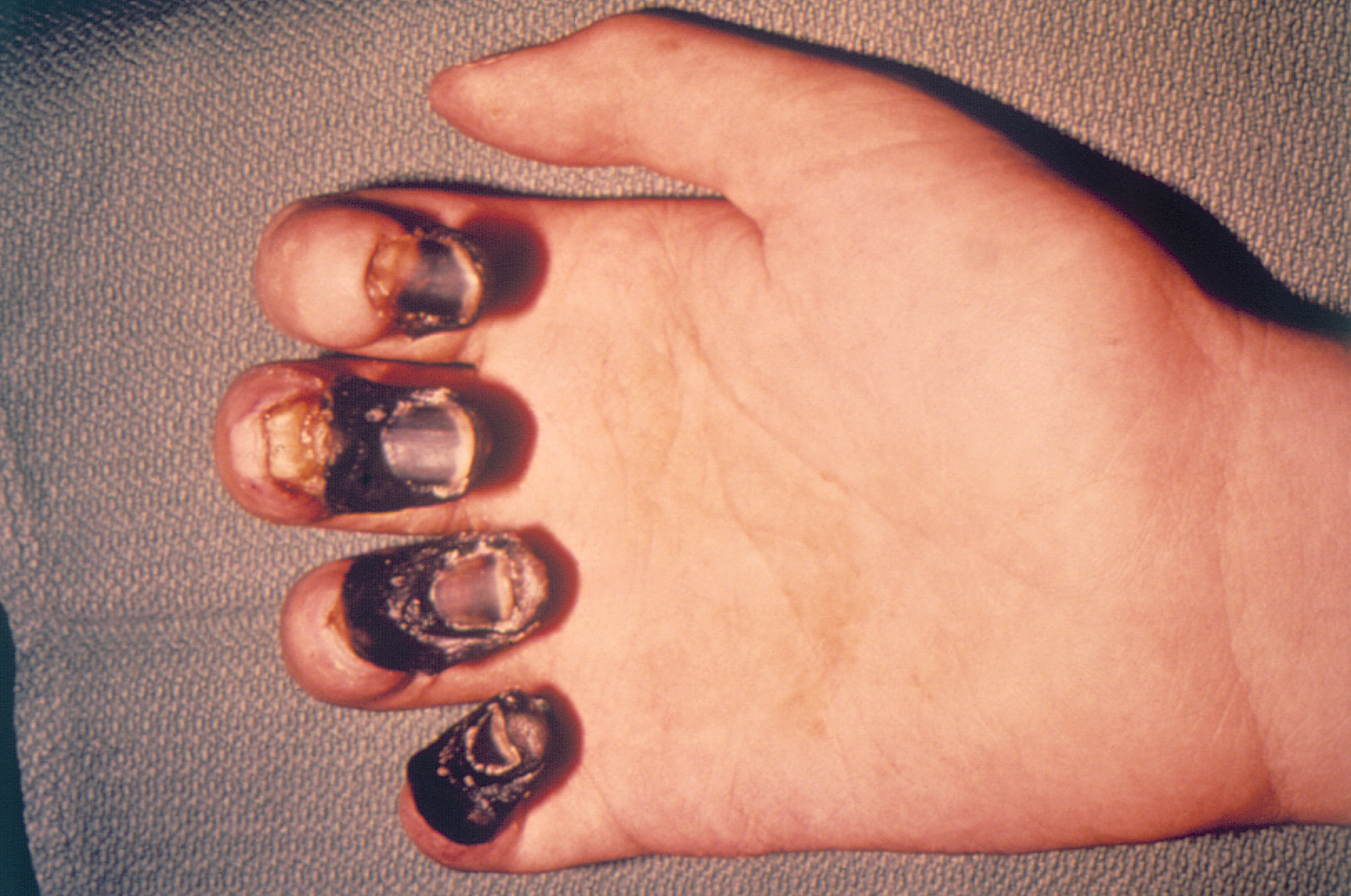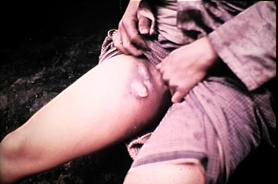 Contemporary
accounts of the plague are often varied or imprecise. The most commonly noted
symptom was the appearance of buboes (or gavocciolos) in the groin, the neck
and armpits, which oozed pus and bled when opened. Boccaccio's description is
graphic:
Contemporary
accounts of the plague are often varied or imprecise. The most commonly noted
symptom was the appearance of buboes (or gavocciolos) in the groin, the neck
and armpits, which oozed pus and bled when opened. Boccaccio's description is
graphic:
"In men and
women alike it first betrayed itself by the emergence of certain tumours in the
groin or armpits, some of which grew as large as a common apple, others as an
egg...From the two said parts of the body this deadly gavocciolo soon began to
propagate and spread itself in all directions indifferently; after which the
form of the malady began to change, black spots or livid making their
appearance in many cases on the arm or the thigh or elsewhere, now few and
large, now minute and numerous. As the gavocciolo had been and still was an
infallible token of approaching death, such also were these spots on whomsoever
they showed themselves."
Ziegler comments
that the only medical detail that is questionable is the infallibility of
approaching death, as if the bubo discharges, recovery is possible.
 This was followed
by acute fever and vomiting of blood. Most victims died two to seven days after
initial infection. David Herlihy identifies another potential sign of the
plague: freckle-like spots and rashes which could be the result of flea-bites.
This was followed
by acute fever and vomiting of blood. Most victims died two to seven days after
initial infection. David Herlihy identifies another potential sign of the
plague: freckle-like spots and rashes which could be the result of flea-bites.
Some accounts,
like that of Louis Heyligen, a musician in Avignon who died of the plague in
1348, noted a distinct form of the disease which infected the lungs and led to
respiratory problems and which is identified with pneumonic plague.
"It is said
that the plague takes three forms. In the first people suffer an infection of
the lungs, which leads to breathing difficulties. Whoever has this corruption
or contamination to any extent cannot escape but will die within two days.
Another form...in which boils erupt under the armpits,...a third form in which
people of both sexes are attacked in the groin
Causes
Medical knowledge
had stagnated during the Middle Ages. The most authoritative account at the
time came from the medical faculty in Paris in a
report to the king of France
The importance of
hygiene was recognized only in the nineteenth century; until then it was common
that the streets were filthy, with live animals of all sorts around and human
parasites abounding. A transmissible disease will spread easily in such
conditions. One development as a result of the Black Death was the
establishment of the idea of quarantine in Dubrovnik
 The dominant
explanation for the Black Death is the plague theory, which attributes the
outbreak to Yersinia pestis,
also responsible for an epidemic that began in southern
The dominant
explanation for the Black Death is the plague theory, which attributes the
outbreak to Yersinia pestis,
also responsible for an epidemic that began in southern
The historian
Francis Aidan Gasquet, who had written about the 'Great Pestilence' in 1893 and
suggested that "it would appear to be some form of the ordinary Eastern or
bubonic plague" was able to adopt the epidemiology of the bubonic plague
for the Black Death for the second edition in 1908, implicating rats and fleas
in the process, and his interpretation was widely accepted for other ancient
and medieval epidemics, such as the Justinian plague that was prevalent in the
Eastern Roman Empire from 541 to 700 AD.
More recently
other forms of plague have been implicated. The modern bubonic plague has a
mortality rate of 30 to 75 percent and symptoms including fever of 38–41 °C
(101–105 °F), headaches, painful, aching joints, nausea and vomiting, and a
general feeling of malaise. If untreated, of those that contract the bubonic
plague, 80 percent die within eight days. Pneumonic plague has mortality rate
of 90 to 95 percent. Symptoms include fever, cough, and blood-tinged sputum. As
the disease progresses, sputum becomes free flowing and bright red. Septicemic
plague is the least common of the three forms, with a mortality rate close to
100 percent. Symptoms are high fevers and purple skin patches (purpura due to
disseminated intravascular coagulation). In cases of pneumonic and particularly
septicemic plague the progress of the disease is so rapid that there would
often be no time for the development of the enlarged lymph nodes that were
noted as buboes.
"Many modern scholars accept that the lethality of the Black Death
stemmed from the combination of bubonic and pneumonic plague with other
diseases and warn that every historical mention of 'pest' was not necessarily
bubonic plague...In her study of 15th-century outbreaks, Ann Carmichael states
that worms, the pox, fevers and dysentery clearly accompanied bubonic plague

No comments:
Post a Comment